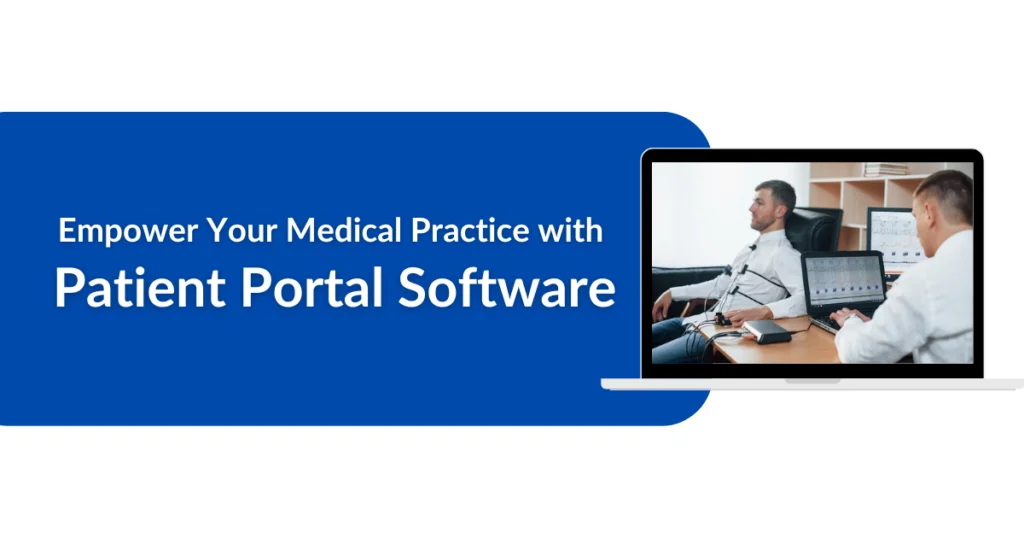 In today’s digital age, technology has revolutionized various industries, and healthcare is no exception. One of the significant advancements in the healthcare sector is the development of patient portal solution. This innovative solution has transformed the way medical practices interact with patients, manage their health information, and provide quality care. In this blog post, we will delve into the world of patient portal software, its benefits, challenges, and future trends, highlighting how it has become an indispensable tool for medical practices.
In today’s digital age, technology has revolutionized various industries, and healthcare is no exception. One of the significant advancements in the healthcare sector is the development of patient portal solution. This innovative solution has transformed the way medical practices interact with patients, manage their health information, and provide quality care. In this blog post, we will delve into the world of patient portal software, its benefits, challenges, and future trends, highlighting how it has become an indispensable tool for medical practices.
What is Patient Portal Software?
A patient portal software is a secure online platform that allows patients to access their personal health information, communicate with their healthcare providers, schedule appointments, view test results, and manage their overall health records. This technology has bridged the gap between patients and healthcare providers, enabling convenient, efficient, and transparent communication.
Why Medical Practices Need Patient Portal Solutions?
In the traditional healthcare model, communication between patients and medical practices often involved time-consuming phone calls, paper-based records, and physical visits. Patient portal system emerged as a solution to address these challenges and enhance patient engagement, streamline administrative tasks, and improve overall patient care.
Benefits of Patient Portal Software
Leading Patient portal solution offers a plethora of benefits to both medical practices and patients, making it an invaluable tool in the healthcare landscape.
- Enhanced Patient Engagement: Patient engagement lies at the heart of successful healthcare outcomes. Patient portal platforms actively involve patients in their healthcare journey by granting them access to their medical history, lab results, treatment plans, and ongoing care instructions. This transparency empowers patients to take charge of their health and well-being.
- Efficient Appointment Management: Patient portal solution simplifies the appointment scheduling process. Patients can book appointments online, reducing phone call volumes and minimizing wait times. The result is an improved patient experience and optimized practice scheduling.
- Secure Communication: Patient-provider communication is facilitated through secure channels within the portal. Patients can send messages, inquire about their treatment plans, and receive prompt responses from healthcare professionals, fostering a strong and open patient-provider relationship.
- Access to Medical Records: Patient portal platform ensures that patients have immediate access to their medical records, which is invaluable during emergencies or when consulting multiple healthcare providers. This real-time access aids in delivering comprehensive and informed care.
- Efficient Prescription Management: Prescription management becomes streamlined with patient portal software. Healthcare providers can electronically transmit prescriptions to pharmacies, minimizing errors and enhancing prescription efficiency.
- Health Education: Patient portal platforms often offer educational resources such as articles and videos that help patients understand their health conditions, medications, and treatment options more comprehensively.
- Time and Cost Savings: Automation of routine administrative tasks like appointment reminders, digital delivery of lab results, and handling common inquiries saves time for both medical staff and patients. This translates into tangible time and cost savings.
Challenges in Patient Portal Platforms
While patient portal solution boasts numerous advantages, it does come with its own set of challenges:
- Digital Disparities: Not all patients have equal access to smartphones, computers, or the internet. This digital divide can lead to disparities in healthcare access, particularly for certain demographics.
- Data Security Concerns: Patient health information is highly sensitive and must be safeguarded against unauthorized access. Ensuring robust cybersecurity measures is paramount to protect patient data.
- Usability and User Experience: Patient portal platforms need to be intuitive and user-friendly. Complex interfaces can deter patients from utilizing the platform effectively.
- Integration with EHR Systems: Seamless integration with electronic health record (EHR) systems is essential for patient portal software to provide accurate and up-to-date patient information.
- Provider Workload: While patient portals streamline communication, they can also inundate healthcare providers with messages, potentially increasing their workload.
Future Trends of Patient Portal Technology
The trajectory of patient portal technology is marked by several trends that are reshaping its future:
- Mobile-Centric Solutions: With the widespread adoption of smartphones, patient portal mobile apps are gaining prominence. Mobile apps offer greater convenience, accessibility, and engagement for patients on the go.
- Telehealth Integration: The rise of telehealth services is influencing patient portal functionality. Integrating telehealth features into the portal allows patients to schedule virtual appointments, access telehealth visits, and receive remote care seamlessly.
- Artificial Intelligence (AI) Integration: AI-powered chatbots are emerging as valuable additions to patient portals. These chatbots assist patients in navigating the platform, addressing common queries, and guiding them to relevant resources.
- Interoperability: Patient portals are moving towards enhanced interoperability, enabling patients to access information from various healthcare providers and consolidate their health records in a single, comprehensive platform.
- Advanced Data Analytics: Patient portal platforms are incorporating advanced analytics capabilities. This empowers patients with insights into their health trends, allowing them to make informed decisions regarding their well-being.
Final Thoughts,
An Advanced Patient portal software has indeed transformed the landscape of medical practices, catalyzing patient engagement, communication, and overall healthcare management. The myriad benefits offered by patient portals are revolutionizing the healthcare experience by prioritizing patient-centered care, streamlining administrative processes, and facilitating secure communication between patients and healthcare providers.
While challenges such as data security and usability persist, the ongoing advancements and innovations in patient portal technology are driving the healthcare sector towards an era of greater accessibility, integration, and patient empowerment. As we peer into the future, patient portal software is poised to play a pivotal role in shaping the healthcare landscape, bridging the digital gap between patients and medical practices and fostering a more connected and informed approach to well-being.
